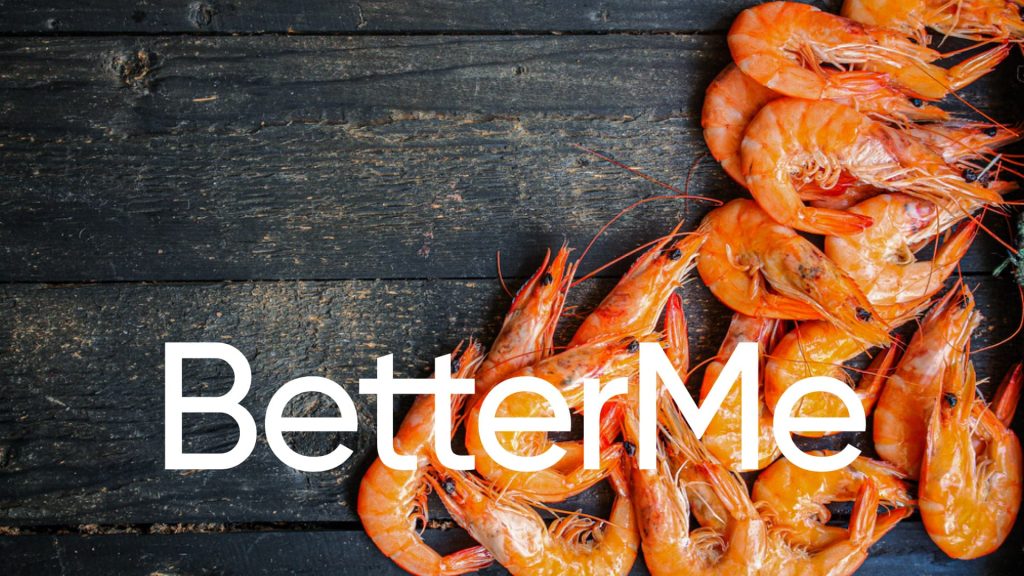Salmon bowls aren’t just a trendy Insta-worthy meal, they’re also a powerhouse of nutrition that embodies the very essence of an aquatic bounty. But we should cast our nets wider, beyond the familiar pink flesh of salmon, as the vast ocean contains a treasure trove of fish, every type brimming with unique nutritional benefits.
Get your personalized
meal plan!
Fish is not just a source of high-quality protein, it is also rich in omega-3 fatty acids, vitamins, and minerals that play essential roles in maintaining good health. From sardines to tuna, and cod to mackerel, every type of fish contains its own nourishment.
In this guide, we will explore the health benefits of different types of fish and discover how they can contribute to a balanced and nutritious diet.
What Is The Best Type of Fish To Eat?
Several types of fish are widely recognized for nutritional purposes.
1. Salmon
Salmon is one of the most popular fish to eat due to its rich flavor and high nutritional value. It can be found in the Atlantic and Pacific Oceans. This fish is an excellent source of protein and is also packed with omega-3 fatty acids, which are believed to promote heart and brain health (12).
In addition to being an ocean fish, salmon is farmed. Regardless of where it’s sourced from, including salmon in your diet may help reduce inflammation, lower blood pressure, and decrease risk factors for chronic disease (19).
2. Cod
Cod is a type of white fish that is found in the Atlantic and Pacific Oceans. It’s known for its mild flavor and flaky texture, which makes it one of the most versatile types of fish to cook. It’s low in fat and is an excellent source of high-quality protein, vitamins, and minerals (4).
Cod is particularly high in vitamin B12, which is essential for maintaining nerve health and producing DNA (20). Consuming cod can also provide you with iodine, which supports thyroid function, and selenium, which is a powerful antioxidant (4).
3. Herring
Herring is a small, oily fish that is found in the North Atlantic and Pacific Oceans. It’s a great source of vitamin D (7), which is essential for bone health and immune function.
Herring is also high in omega-3 fatty acids (7), which are known for their heart health benefits. As a type of saltwater fish, herring is nutritious and incredibly easy to prepare in a variety of ways. Its rich, savory flavor makes it a popular choice for many dishes all over the world.
4. Mackerel
Mackerel is another oily, flavorful fish that’s found in warm and temperate ocean waters. It’s rich in omega-3 fatty acids and provides a decent amount of vitamin D. It also contains high levels of protein and vitamin B12 (8).
Eating mackerel can support heart health, due to its omega-3 content (17). In addition, the protein in mackerel can help repair body tissues and maintain muscle mass.
Whether you’re a workout beast or just a beginner making your first foray into the world of fitness and dieting – BetterMe has a lot to offer to both newbies and experts! Install the app and experience the versatility first-hand!
5. Rainbow Trout
Rainbow trout is a type of freshwater fish that’s native to the cold-water tributaries of the Pacific Ocean. It’s rich in protein and omega-3 fatty acids (16).
Rainbow trout is celebrated for its delicate flavor and tender flesh. Including this fish in your diet can support heart health and contribute to strong bones and teeth.
6. Mahi-Mahi
Mahi-Mahi, which is also known as Dolphinfish, is found in off-shore temperate, tropical, and subtropical waters all over the world. It’s a lean fish that is rich in protein and B vitamins, particularly B5 (9), which aids in energy metabolism.
Eating Mahi-Mahi can support muscle growth and help maintain healthy skin. The B5 it contains is also essential for converting food into energy.
7. Sardines
Sardines are small, oily fish that are incredibly nutritious. They can be found in most of the world’s oceans and are high in omega-3 fatty acids, in addition to offering an impressive amount of vitamin B12 (13).
The high nutrient content in sardines helps support heart health, brain function, and bone strength. Their small size also means they contain fewer heavy metals (mercury) than larger fish.
8. Tuna
Tuna is a saltwater fish rich in protein and omega-3 fatty acids. It’s found in warm seas and is one of the most popular fish to eat globally. Tuna is also high in several vitamins and minerals, such as vitamin B12 and selenium (15).
Consuming tuna can help support heart health and immune function, while preventing chronic diseases (2). However, due to concerns about mercury levels, consumption should be moderated. Two servings per week is the highest recommended intake, and choosing lower-mercury varieties such as skipjack and canned light tuna is a good idea.
9. Halibut
Halibut is a flat, diamond-shaped fish that is found in the North Pacific Ocean. It’s a good source of high-quality protein and minerals, which makes it one of the best fish to eat for overall health. Halibut also contains a significant amount of magnesium and potassium (6).
The nutrients in halibut can help support heart health, aid in energy production, and promote healthy bone and muscle function.
10. Flounder
Flounder is a type of flatfish that is found in the Atlantic and Pacific Oceans. It has a delicate flavor and tender texture. Flounders are low in fat and high in protein.
Including flounder in your diet can help support muscle growth and repair. It also provides a good amount of vitamins B12 and D (5), which help support nerve function and bone health.
11. Snapper
Snapper is a type of red fish that offers a lean source of protein and is packed with selenium, vitamin D, and omega-3 fatty acids (14). It can be found in the Atlantic and Pacific Oceans.
Eating snapper can support heart and brain health due to its omega-3 content. Its selenium content also plays a crucial role in maintaining a healthy metabolism.
12. Swordfish
Swordfish is a meaty fish that’s rich in protein and is also a great source of selenium, niacin, and vitamin B12 (11). It’s found in the Atlantic, Indian, and Pacific Oceans.
Swordfish can support muscle health, improve immune function, and boost energy levels. However, it’s advised to moderate swordfish consumption due to its potential high mercury content.
13. Pollock
Pollock is generally found in the cold waters of the Arctic Ocean. It’s a low-fat fish that’s a good source of protein, vitamin B12, and iodine, which makes it one of the best fish to eat for those who want a lean source of protein (10).
Due to its iodine content, eating pollock can support thyroid health. It can also help maintain a healthy nervous system due to its vitamin B12 content.
What Is The Most Popular Type of Fish?
In the United States, salmon is the most popular fish due to its ready availability, rich, buttery flavor, and high nutritional value. It’s a versatile fish that can be prepared in a variety of ways, from grilling to baking, and it’s a staple in both home cooking and gourmet cuisine. It is also packed with omega-3 fatty acids and is an excellent source of protein, which adds to its appeal.
Tuna is another popular fish, particularly in Japan where it’s a primary ingredient in sushi and sashimi. Tuna is prized for its firm texture, mild flavor, and high protein content. However, consumption should be moderated due to concerns relating to mercury levels.
Tilapia is a freshwater fish that is also widely consumed due to its affordability and mild taste, which makes it a versatile ingredient for various dishes. Tilapia farming is widespread, which has contributed to its availability and popularity.
Trout, specifically rainbow trout, is incredibly popular in the US and Europe. It’s highly regarded due to its delicate flavor and trout fishing has also increased its popularity.
Catfish is a popular choice in the southern United States, where it is often served fried. It’s known for its firm, mildly sweet flesh.
When it comes to recreational fishing, bass tops the list in North America. Bass fishing is considered to be a sport and it has spawned a massive industry of tournaments, specialized gear, and professional bass fishing celebrities.
Read more: Are Pickled Beets Good For You?
Which Fish Has More Benefits?
While many types of fish are nutritious, salmon is considered to be one of the most beneficial. Its high content of omega-3 fatty acids, an essential fat our bodies can’t produce on their own, contributes to cardiovascular health and brain function (19).
This fatty fish is also rich in protein, which is essential for muscle maintenance and repair. In addition, salmon is an excellent source of B vitamins, which are necessary for energy production, DNA creation, and reducing inflammation.
It’s also one of the few natural food sources of vitamin D, which is essential for bone health. However, many types of fish provide similar nutritional benefits, so you should eat whichever type you prefer.
Can I Eat Fish Every Day?
Yes, you can eat fish every day, but it’s important to vary the types of fish you consume. Many health organizations, including the American Heart Association, recommend a minimum of two servings of fish each week, particularly fatty fish such as salmon, mackerel, and sardines, which are high in omega-3 fatty acids (3).
However, some types of fish contain higher levels of mercury, and this can be harmful if consumed in large quantities. These include shark, swordfish, king mackerel, and tilefish. Pregnant women and young children should avoid these types of fish and limit their consumption of other fish to avoid any potential risk (1). You should check FDA and local guidelines for eating fish to limit mercury exposure.
It’s also important to consider the sustainability of the fish you consume. Overfishing and destructive fishing practices have resulted in the depletion of many fish populations. Opting for sustainably caught or farmed fish can help protect the biodiversity of our oceans.
While eating fish every day can be part of a healthy diet, it’s important to balance this with a variety of other protein sources and consider factors such as mercury content and sustainability.
Whether you’re looking to simply pep up your fitness routine, jazz up your diet with mouth-watering low-calorie recipes or want to get your act together and significantly drop that number on your scale – BetterMe app has got you covered! Improve your body and revamp your life with us!
Frequently Asked Questions
Which fish is highest in protein?
Tuna, particularly bluefin, stands out as having the highest protein content. A cooked 3 oz fillet of bluefin tuna can contain as much as 25.4g of protein (13). It’s an excellent choice for those who are looking to increase their protein intake. However, it’s important to remember that larger species such as bluefin can contain higher levels of mercury, so consumption should be moderated. All fish are high in protein, so you should choose according to your preferences.
What is the most unhealthy fish?
While all fish have nutritional benefits, some pose potential health risks due to high levels of contaminants such as mercury. Large predatory fish such as shark, king mackerel, and swordfish tend to have the highest levels of mercury as they consume smaller fish that absorb mercury through seawater and food.
The regular consumption of these types of fish can cause mercury poisoning.
What types of fish can I eat while pregnant?
Pregnant women can benefit from the omega-3 fatty acids that are found in fish, as they help with the development of the baby’s brain and eyes. However, it’s important to choose fish that is low in mercury.
The best choices are salmon, sardines, freshwater trout, and Atlantic and Pacific chub mackerel. Shrimp, canned light tuna, catfish, pollock, and crab are also low in mercury. The FDA recommends pregnant women eat two servings of these types of fish each week (1). See their website for the full list.
What should I not do when cooking fish?
When cooking fish, you should avoid overcooking it, as this can make it dry and tough. Use a food thermometer to ensure the fish reaches the correct internal temperature—145 degrees Fahrenheit—to ensure any potentially harmful bacteria are killed. You should also avoid pairing fish with overpowering sauces or seasonings, as they can mask the delicate flavor of the fish.
In addition, if you’re pan-frying or grilling, you should avoid moving the fish around too much as this can cause it to break apart. Finally, when buying fish, freshness is key. Always avoid fish that has a strong, fishy odor, as this is often a sign that it is not fresh.
The Bottom Line
Incorporating a variety of fish in your diet can provide several health benefits. From heart-healthy omega-3 fatty acids to high-quality protein, different types of fish have unique nutritional profiles, but they all have a great deal to offer too. Whether it’s the robust flavor of salmon, the lean protein of tuna, or the low-mercury content of sardines, there’s a type of fish that suits every dietary need and preference.
DISCLAIMER:
This article is intended for general informational purposes only and does not serve to address individual circumstances. It is not a substitute for professional advice or help and should not be relied on for making any kind of decision-making. Any action taken as a direct or indirect result of the information in this article is entirely at your own risk and is your sole responsibility.
BetterMe, its content staff, and its medical advisors accept no responsibility for inaccuracies, errors, misstatements, inconsistencies, or omissions and specifically disclaim any liability, loss or risk, personal, professional or otherwise, which may be incurred as a consequence, directly or indirectly, of the use and/or application of any content.
You should always seek the advice of your physician or other qualified health provider with any questions you may have regarding a medical condition or your specific situation. Never disregard professional medical advice or delay seeking it because of BetterMe content. If you suspect or think you may have a medical emergency, call your doctor.
SOURCES:
- ADVICE ABOUT EATING FISH (2021,fda.gov)
- Eat tuna for a healthy body and mind (2020,tunaaustralia.org.au)
- Fish and Omega-3 Fatty Acids (2021,heart.org)
- Fish, cod, Atlantic, raw (2018,usda.gov)
- Fish, flatfish (flounder and sole species), raw (2019,usda.gov)
- Fish, halibut, Atlantic and Pacific, raw (2019,usda.gov)
- Fish, herring, Atlantic, pickled, 1 oz, boneless (n,d ,rochester.edu)
- Fish, mackerel, Atlantic, raw (2019,usda.gov)
- Fish, mahimahi, raw (2019,usda.gov)
- Fish, pollock, Atlantic, raw (2019,usda.gov)
- Fish, swordfish, cooked, dry heat (2019,usda.gov)
- Fish, salmon, Atlantic, wild, raw (2019,usda.gov)
- Fish, sardine, Atlantic, canned in oil, drained solids with bone (2019,usda.gov)
- Fish, snapper, mixed species, raw (2019,usda.gov)
- Fish, tuna, fresh, bluefin, cooked, dry heat (2019,usda.gov)
- Fish, trout, rainbow, wild, raw (2019,usda.gov)
- Omega-3 fats – Good for your heart (2022,medlineplus.gov)
- Pacific Sardine (2023,fisheries.noaa.gov)
- Salmon and Its Health Benefits (2022,nnc.gov.ph)
- Vitamin B12 benefits (2023,medlineplus.gov)











